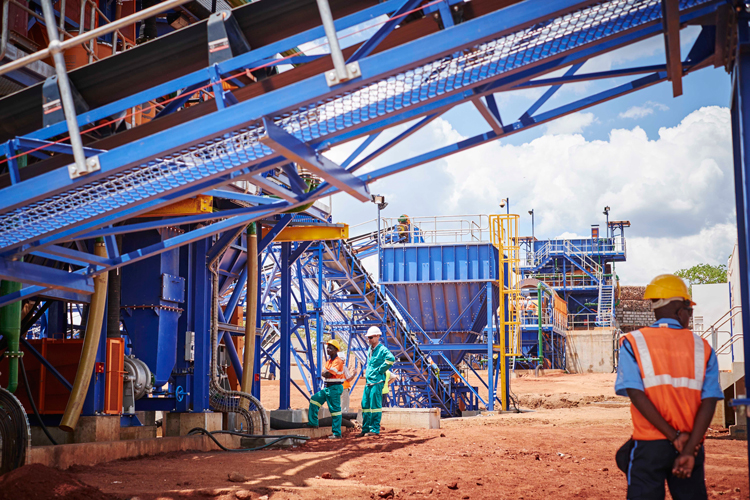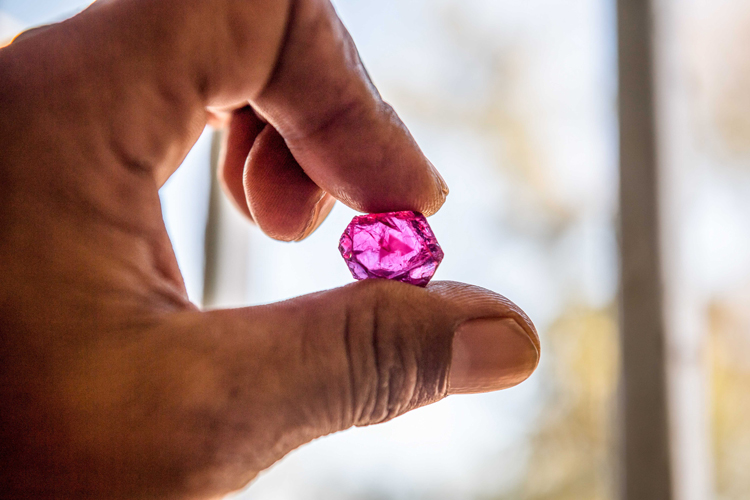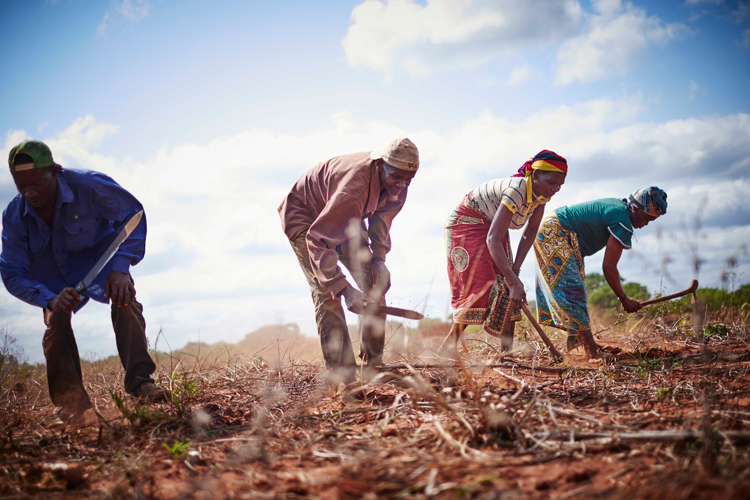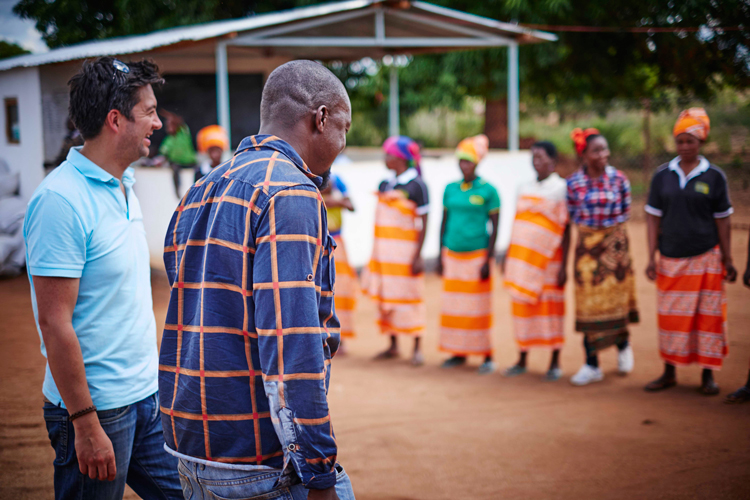As one of the world’s leading suppliers of responsibly sourced coloured gemstones, Gemfields provides stones to many luxury jewellery brands worldwide.
By Ruba Nesly
Gemfields is the operator and 75% owner of both Kagem emerald mine in Zambia (believed to be the world’s single largest producing emerald mine) and Montepuez ruby mine in Mozambique (one of the most significant recently discovered ruby deposits in the world), as well as active exploratory licences in Ethiopia, amongst others.
At the epicentre of Gemfields is its responsibility to source and provide stones in a sustainable manner. Taking a leading role in modernising the coloured gemstone industry and building lasting, sustainable livelihoods for the communities living close to the mines and contributing in a positive way to national economies. Gemfields believes in three key values; legitimacy, transparency and integrity.
But responsible sourcing of coloured gemstones is not just about the people working in the mines, it also covers the way in which the stones are handled. In an industry that does have a negative impact on the environment, Gemfields strives to manage its mines and sites to ensure they have minimal impact on the environment. Before mining in any particular area, Gemfields collects seeds of the indigenous plants and trees from the top soil to create a seed bank. The seeds are then grown in a nursery and are replanted once mining has been completed. The result is a minimal impact on the land as well as encouraging biodiversity. Gemfields does not use any chemical substances that are hazardous to health or polluting and machine oil is carefully discharged.
When it comes to the people working in the mines, Gemfields operates high standards and safety practices a zero-harm culture through raising awareness and highlighting the importance of individual and shared responsibility. Gemfields works closely with the local community and strives to provide education, health and an improved quality of living to the people in the areas around the mines.
Ensuring the smooth-running of all of this is Jack Cunningham, Sustainability and Risk Director. A&E talks to Cunningham to discover more on what Gemfields is doing to embrace sustainability in the sourcing of its stones.
When did Gemfields decide to start with ‘responsible sourcing and why?
Acting responsibly as a mining company was something conceived of at the start of the business when only one operation, the Kagem emerald mine, existed. The aim was to differentiate the company within the coloured gemstone industry and pave the way for more responsible practices up and downstream.
How do you define ‘responsible sourcing’?
I would describe it in terms of transparency, legitimacy and integrity. Anything sourced should come from legal suppliers who can provide assurances around how the product has been made or where it came from. Integrity and transparency in this context are about there being systems, policies or standards of working that meet best practice and that are openly communicated or published. For instance, in the coloured gemstone sector, because the majority of coloured gemstones are mined artisanally, there are weak systems of transparency and integrity to ensure that good practices have been used to mine them, or taxes paid once they are exported.
As a world-leading supplier of coloured gemstones, what are the basic rules that you adhere to for responsible mining?
Like most mining companies, our operations have to adhere to the national regulations on mining – everything from the licensing to safety, to environmental rehabilitation can be governed by strict codes of conduct or laws. As a minimum, we will comply and rectify any non-compliances we find.
Beyond that, we aim to push towards international best practices. For instance, many mines spend more time extracting the ore (the raw material) than they do rehabilitating the environment because it is costly and time-consuming to divert attention from mining. However, we believe it is a better strategy to fill in our mining pits when an area is no longer producing gemstones, so we are mining and effectively rehabilitating the mining area at the same time – minimising the effect we have on the environment.
You believe that coloured gemstones should be mined by three key values, what have you achieved so far on the ground in relation to this?
We are open with host government ministries about what we produce and what value our gemstones sell for so they can calculate the amount of taxes and royalties that are repatriated to their country. We operate as legitimate, licence holding businesses in the host countries adhering to the national regulations and laws, and finally, we operate with integrity, putting in place programmes of continuous improvement and working closely with the local communities to ensure good relations and investments in their livelihoods to help sustain their futures.
What challenges do you face now in the industry?
Right now, the whole coloured gemstone and jewellery industry is at a bit of a crossroads. Whilst we are pushing for greater transparency and a level playing field in terms of the basic approaches all should take in terms of responsible sourcing, there are others who are not supportive of Gemfields.
We accept that as the biggest supplier of coloured gemstones there are those that don’t want to see their own supplies dry up, but the jewellery companies are increasingly demanding a balance between price, the certainty of supply, quality, transparency and sustainability. The industry has to understand and reconcile that there are legal risks and challenges from sourcing gemstones from artisanal, small-scale and particularly illicit sources. But because the industry has survived on centuries-old ways of mining and trading, many are unwilling or unable to move towards a more modern manner of sourcing.
What is the future of sustainability at Gemfields?
This isn’t a project that has a start and end date. The efficacy and ethos of Gemfields’ approach will continue to evolve and improve. As the mines themselves have a 20+ year lifespan, our approach has to be considered as a long-term aspect of the business. Just as any business does not place timelines on the development of its human resources practices, neither should we see there being a finite point of time where we can say we have achieved all our sustainability and responsible sourcing goals.
How would you encourage the other companies in the world to take your steps in responsibility and sustainability?
Firstly, you need to consider how material the issues are to your business and adjust your resources accordingly. If you are a small business, resources will be harder to come by. Secondly, consider what leverage you have to make change happen – either your own business or your partners and suppliers. Develop codes of practice, policies and a vision for what kind of company you want to be and put in place a programme of projects to get there. Balance action with communication; try not to communicate unachievable goals or actions that can’t be proven.
Finally, listen to what your stakeholders expect, particularly customers or business partners – if they are demanding change, then you need to think through how you’ll meet their expectations and what you can do to get there.
Do you think that the “sustainability” movement is a trend or a way of marketing for some brands? Is every sustainable brand being truly sustainable to the bones?
It depends on the company. For some, it will be seen as a trend to jump on depending on the issue or the need to add to marketing and communications, but for others, it is at the core of their business. You only need to look at public policy and the role of media to see that habits and expectations about products are changing. Consumers, particularly millennials, are influential and want to associate with brands that are reflective of their own values. However, there are also plenty of examples of established brands continuing to use sustainability as a convenient tool to sell more product.
What is the goal that you would still like to achieve?
I would like to see large and small players in the coloured gemstone and jewellery industry work together to achieve a leap forward in terms of sustainability and responsible sourcing and for consumers to have confidence that whatever they buy has legitimacy, transparency and integrity behind it.
Do you apply sustainability in your daily and personal life?
I try to wherever and whenever possible – I consciously eat less meat these days because of climate change, and as I live in England, I buy British, seasonal and organic food as much as possible. I am very conscious about the amount of packaging waste I produce and recycle everything I can, though in the UK it’s not so easy because the recycling system is not very effective.
I don’t own a car, but instead, have joined a car-club, and I try to buy clothes that have incorporated post-consumer waste, or recycled materials. Flying is a challenge, as I fly quite a lot for work, but I don’t fly much for my own holidays.
What is your professional motto?
I don’t live by one motto in particular, but a fitting quote I come back to is attributed to Sir Henry Royce: “Whatever is rightly done, however humble, is noble”.
What do you say no to?
I say no to meat on Mondays or Wednesdays! As I mentioned before, this is a contribution to minimising my personal effect on climate change.
READ MORE
How the Founding Family of Chopard Are Championing Ethical Gold























